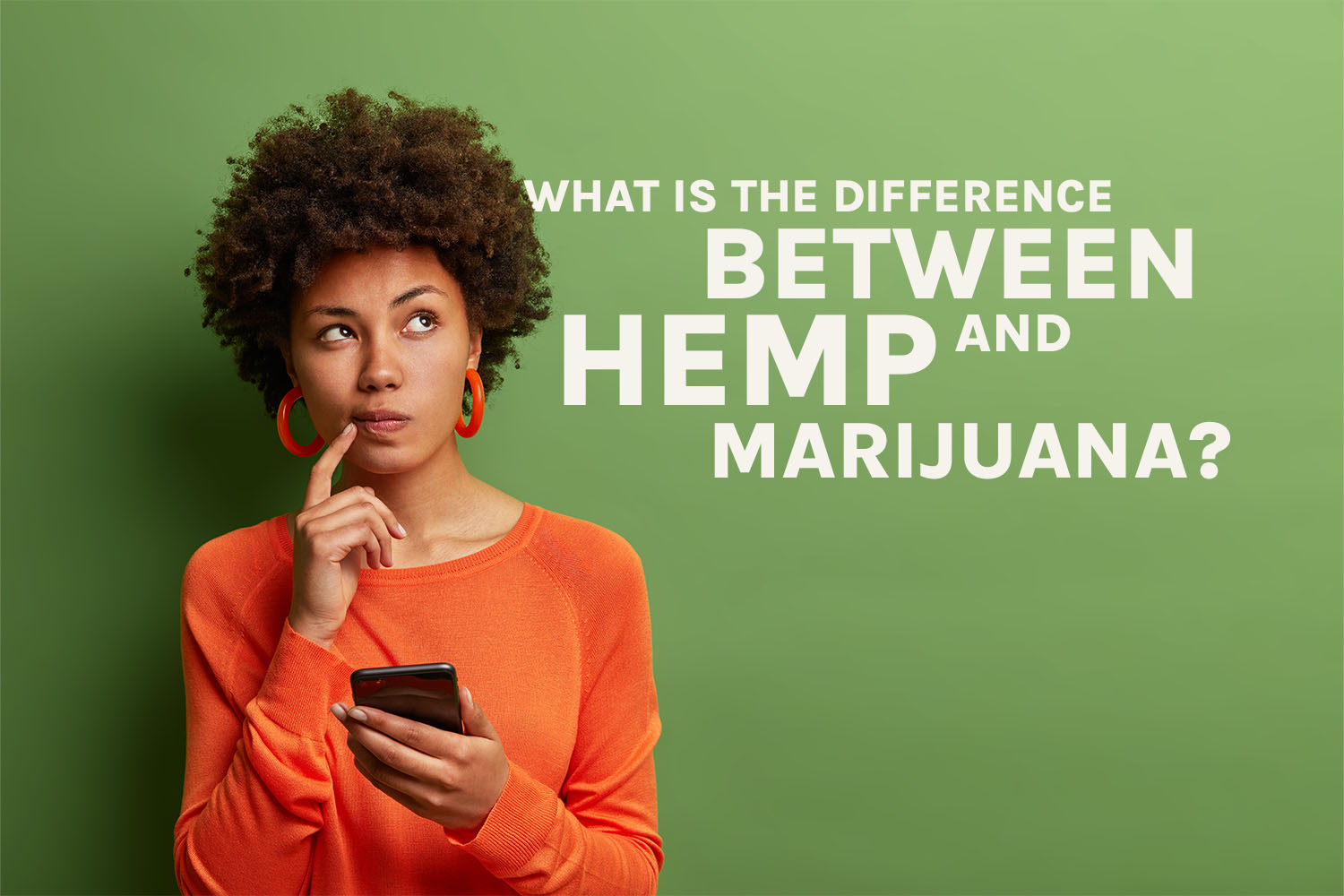Hemp vs Marijuana – What’s the difference?
Hemp and marijuana are both sub-species of the cannabis plant, but they are different in several key ways.

Hemp vs Marijuana - Key Differences
Despite originating from the most recognisable plant in the world, it may be difficult to determine what the difference between hemp vs marijuana is.
The key difference between them is the level of tetrahydrocannabinol (THC). This is affected by the strains present in the plants (i.e Indica strains and Sativa strains).
THC is the psychotropic compound responsible for the “high” associated with marijuana use. Marijuana usually contains THC levels ranging from 5% to 30%, whereas industrial hemp, the type of cannabis used to make CBD (cannabidiol) products, must contain less than 0.3% THC (or less than 1mg per container in the UK) to be sold or purchased.
This low THC content is mandated by law to ensure that hemp products do not cause any intoxicating effects or possess any drug abuse potential.
Sativa strains will typically contain high CBD count and low THC count, which is why it is commonly referred to as Cannabis Sativa L, or, Industrial Hemp. On the other hand, Indica strains will most often occur in the marijuana plant as it contains a high THC count and low CBD count.
To learn more about the Indica and Sativa strains, read about them in our Cannabis Guide!
Physical charasteristics
In addition to their differing THC levels, hemp and marijuana have distinct physical characteristics, though it may be difficult on how to identify the hemp plant or the marijuana plant.
Hemp plants are typically tall and slender, reaching heights of up to 6 meters. Their fans (a term used to describe each individual group of leaves attached to the stem) contain leaves that are longer and thicker, with a pointed tip.
In contrast, marijuana plants are shorter and more compact, generally growing to a height of around 1.5 meters, and their leaves are thinner and more closely spaced on the stem.
Despite this, the Cannabis plant is vastly varied in terms of size, therefore, both the marijuana and hemp sub-species respectively can overlap in terms of appearance, especially if they are bred with other sub-species of the cannabis plant, such as cannabis ruderalis.
Legality
Hemp and marijuana also have significant differences in their legal status, which vary between countries and jurisdictions.
In the United States, the cultivation of hemp was legalised with the passage of the 2018 Farm Bill. This law removed hemp from the list of controlled substances, effectively allowing farmers to grow hemp for industrial and research purposes. However, marijuana remains illegal under federal law, though some states have legalised it for medicinal or recreational use.
The legal status of hemp and marijuana in the US is complicated and varies between different states, with some states allowing the sale of hemp-derived products and others still prohibiting it.
In the United Kingdom, both hemp and marijuana are classified as controlled substances under the Misuse of Drugs Act 1971. This law makes it illegal to produce, supply, or possess either substance without a license.
However, hemp-derived CBD products are permitted and are legal in the UK, as long as they meet certain regulatory requirements of less than 1mg of THC per container/product.
It’s important to note that laws regarding hemp and marijuana are evolving and may vary significantly between different countries and regions.
Moreover, the legal status of these plants can have significant implications for the agriculture, healthcare, and business industries that rely on them.
The uses of Hemp
Hemp and marijuana have a wide range of uses, although they are used for different purposes due to their distinct physical and chemical characteristics.
Hemp has long been used for industrial purposes, thanks to its strong and durable fibres, which can be used to make textiles, paper, rope, and building materials. Moreover, hemp is used to create CBD products such as CBD Gummies or CBD Oil Drops due to the presence of the Cannabis Sativa strain (which as previously mentioned, contains a high CBD count).
Another popular hemp derived product is hemp oil, also known as hemp seed oil. CBD oil is often confused for the former despite being very different (read more on the difference between Hemp oil and CBD oil).
In addition to these benefits, hemp is much more sustainable than traditional sources of these products as it grows quickly and requires less water and fewer pesticides. For example, hemp can be used to make paper products, which would help to reduce the amount of deforestation required for traditional paper production.
The uses and effects of Marijuana
On the other hand, marijuana is primarily used for recreational or medicinal purposes, thanks to its high THC content. THC is the psychotropic compound sought after by recreational users for its euphoric “high” feeling.
However, THC also has numerous potential medical applications, such as relieving pain, reducing inflammation, and easing nausea and vomiting in cancer patients undergoing chemotherapy.
Despite this, marijuana is only used in extreme cases as THC has a plethora of side effects that can be fairly unpleasant.
Marijuana’s effects include but are not limited to: Impaired short-term memory, reduced ability to concentrate, increased heart rate which may be dangerous for people with heart conditions, dizziness, confusion, increased anxiety and paranoia as well as increased risk of mental health problems such as depression and psychosis.
Summary
In summary, hemp and marijuana are two distinct varieties of the cannabis plant, each with its own unique properties and uses.
Additionally, hemp’s fibrous and durable nature makes it an ideal source of industrial products, while its fast growth and low water usage make it a more sustainable alternative to traditional materials like cotton and wood.
With the increasing popularity of CBD, derived from hemp, and growing public awareness of the environmental benefits of hemp, it is likely that hemp will continue to play a prominent role in numerous industries in the future.